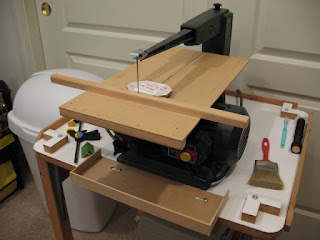From left to right we have 1) top view of casting, 2) its blank underside, 3) underside after carving with an awl/nail and a squarish smoke hole drilled/carved in each end (not shown), and 4) cut in half. Of course, an uncut one would look great on a haunted house!
The non-smoke hole ends of the two pieces were drilled and a round toothpick was glued in for pinning to a roof. Then they were painted. Cool! Two chimneys!
NEXT: The HG WALLS technique of roof shingling!













